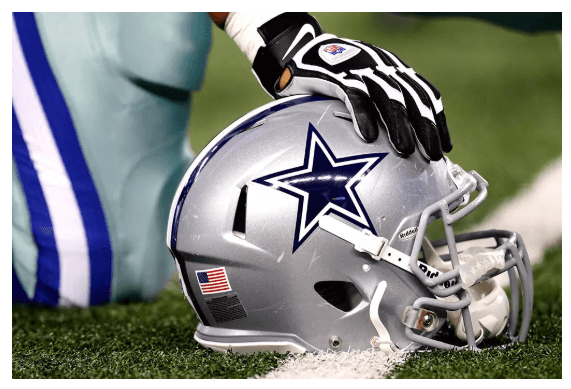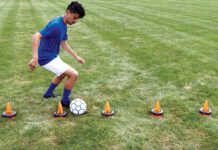American football, as the name already indicates is a sport that was created in the United States of America, starting with it being a variant of rugby and soccer (or soccer) and with the passage of time, the american football rules were changing until this day.
It is considered a rather violent and rough game, and therefore some people more fragile are shaken, but if we compare with other sports, for example, rugby, that despite having several regulations on how one player can invest in the other, they do not use almost no protection, being a game much more physical and professional players always have a lesion parchment …
History of American Football
As we have already said, this sport arose from the adaptation of rugby and football, which began when the Harvard and McGill universities decided to do a series of 3 games between them in 1867, and while the Harvard team played the game of Boston (which was similar to football) and McGill’s team played rugby.
Since at that time, there were no super-regulated rules and from place to place there were always differences between them and over time the games between the universities were undergoing changes in their rules until they were distancing themselves more and more from rugby, .
Today, this sport has even surpassed Baseball in terms of popularity in the United States, with the NFL Super Bowl final being one of the biggest if not the biggest sporting event of the year in that country.
American Football Game
The American football game consists of points scoring by two teams, each with 11 players on the field, this being a very strategic sport and with many plays that make the game more complex and impressive.
The game is divided by four periods of 15 minutes each, making a total of 60 minutes, but the stopwatch is stopped in many situations, such as fouls, when the ball goes out the side line, some team scores or when in a pass no one grabs the ball before it touched the ground.
The match starts with a kick off (a kick that occurs to 35 yards that one team makes to the other team’s field, being kicked by the kicker), happening at the beginning of each time and when some of the teams score some point.
It is also allowed for the technicians of each team to request time-out, as is done in other sports, which is a short pause for the coach to communicate with his team or break the pace of the other team. Each team is entitled to 3 time-outs in half.
American Football Field
The American Football field has length 120 yards (approximately 109 meters) and 53,3 yards wide (almost 49 meters), whereby the field is divided by 10 lines in 10 yards along its length. Beyond the bottom line on either side is Endzone, which is where players mark touchdowns, often being of a different color to be easily identified by players in the middle of the game.

How to Play American Football
Unlike the vast majority of collective sports, where the game is dynamic so that both teams attack and defend at the same time, this is no longer the case in American football.
While one team is attacking, the other is defending. When it changes, the alignment of the teams usually changes as well.
Each team has 4 attempts (or downs) to advance 10 yards. If he can not do it, the team that was defending is attacking and vice versa.
Usually when they are already in the 4ª attempt the team makes a punt, which is a kick, sending the ball as far from their field as possible so as not to risk losing possession of the ball (and the attack) very close to their side.
Score
Briefly, there are two ways to score points. The first and which translates into more points, is the famous touchdown, which consists of taking the ball to the end of the opposing side field, up to Endzone, which are in the last 10 yards of each end (if we consider the field with 120 yards). From the moment the play enters this zone with the ball the team marks 6 points.
After that, the team that scored has two options: either choose an extra point, which is a kick to 12 yards to hit between the two posts of the “beacon” thus marking 1 point, which is the most common since it is relatively easy right now as it gets quite close.
The team can also choose a conversion, which is the opportunity to mark another touchdown, starting from the mark of the 2 yards, and this touchdown valeria 2 points.
Finally, the team can also try to kick the ball at any time in an attempt to hit the opponents’ goal posts, and players normally only do so when they are more or less between 20 and 40 yards apart. they go in the 4ª attempt to advance, not making a punt.
One should not do this very far, first because the further away it becomes very difficult to get a chance to hit and when a field goal fails, the opposing team recovers the ball at the place where the kick was made.
Exchange of Possession Ball
The teams exchange possession of the ball, and consequently the functions of attack for defense and vice versa in the following situations:
Do not advance the 10 yards: If after the 4 downs the team that is attacking has not been able to advance the 10 yards have to return possession of the ball to the opposing team;Field Goal failed: If when attempting to make a field goal, he does not hit the team he was defending gains the possession of the ball and starts to advance where the kick was made.
Fumble: It is when a player drops the ball because he could not receive it after a pass or more common, after a violent tackle that forced him to drop the ball. This remains in play and can be recovered by the opponent.
Punt: As we have already said, as a feature play, teams when they are in the 4 attempt to conquer 10 yards often end up resorting to punt to knock the team away from their side of the field, returning the ball with a kick.
Interception: When a player intercepts a pass in the air, the team that was defending is automatically in possession of the ball.
Player Positions
Offensive positions
- Quarterback (QB): creates the plays and launches the ball. It’s the team’s brain.
- Running Back (RB): are the runners
- Wide Receiver (WR): are the fast receivers
- Tight End (TE): last offensive line blocker
- Center (C): responsible for the offensive line. Pass the ball to QB
- Guards (LG / RG): Blockers
- Tackle (LT / RT): Protects QB
Defensive positions
- Defensive End (DE): prevents races and tries to overthrow QB
- Defensive Tackle (DT): prevents races and tries to overthrow QB
- Linebackers (LB): Defends moves and races of the attack
- Cornerbacks (CB): mark the WR
- Safeties (S): they are the last defenders of the defense
- Kicker (K): kicks the field goal and kicks off
- Punter (P): kick the ball
Football Equipment
In football, a lot of equipment is used, more than in most sports, most of them being protective devices for the player. Let us now enumerate these equipments.
Ball
The Ball is usually made of leather, being sewn with lace, and has an oval shape, thus being more aerodynamic than a round ball, thus being ideal to be rolled.
Helmet
Made of a very hard plastic, it protects the head of the player and has a face in front of the grid to protect it but also maintaining visibility. It is also part of the player’s equipment.
Protectors
They use several types of protectors that protect them in multiple places, from the shoulders, chest, knees, hips and thighs.
Gloves
They wear special gloves for American Football, thus increasing their grip and helping players to hold the ball.
Pants and Shirt
These have no specific function, being only part of the uniform, where the colors and symbol of the team are represented. Also the number and name of the player to be identified.
Football Boots
As the pitch is grass / turf, players use cleats with pitons to get better contact with the ground.
Most Popular American Football Faults
Yellow Flag: The referee sends a yellow flag to the ground to signal any foul or penalty and thus warn the players, coaching staff and other referees;
Game Width: The team that is attacking has 40 seconds to restart your move. Failure to do so will result in a penalty of 5 yards.
False output: to start a valid mode play, the players of the team with possession of the ball must be totally stopped. Only one player (not in the first row) can be in motion, always parallel to the line of scrimmage. Any movement by another player that simulates the start of the play is characterized as foul and the punishment is the 5 yards retreat.
Off side: is scored if a defending team player exceeds the scrimmage line before the start of the move. As punishment, the defense retreats 5 yards
Holding: during a play, only the player in possession of the ball may be held or seized. Everyone else can just push themselves. if an attacker holds a defender, his team is punished with 10 yards retreat. If a defender holds an attacker, his team loses 5 yards and the attack wins the first automatic down.
Pass interference: The defender can not push or do something similar in the striker to make it receive the ball. There may only be contact when it tries to contact the ball. If this happens, the team continues to attack from the location of the foul counting as the 1º down.
Personal foul: Strike the opposing player with the helmet on the head, on the knees, make a tackle off the field or anything else that the referee considers anti-gambling and anti-sports. A penalty of 15 yards is given and counts as 1th down.




